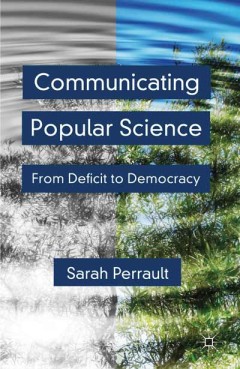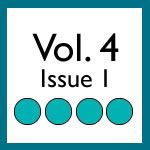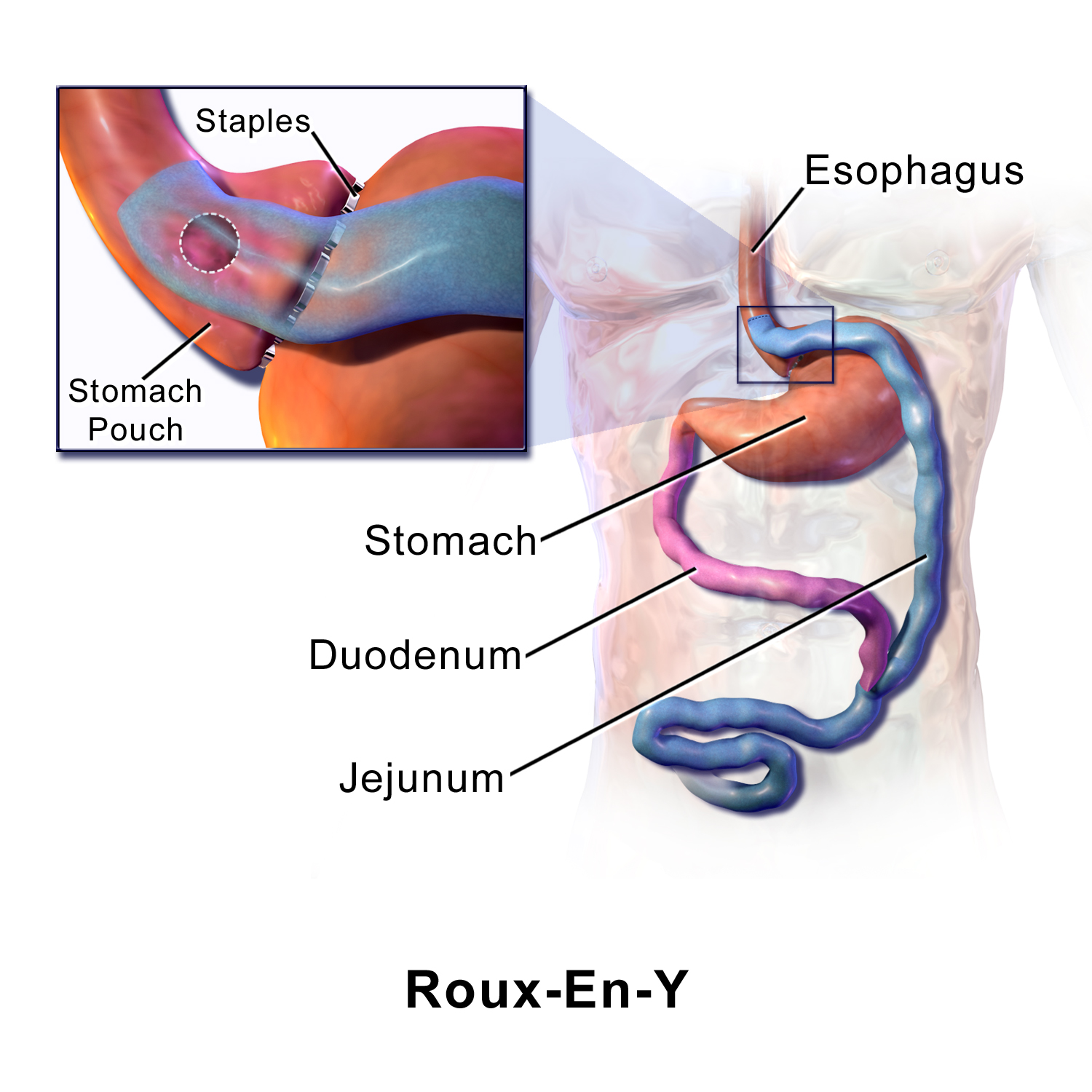Book Review: Perrault’s Communicating Popular Science
 In Communicating Popular Science: From Deficit to Democracy, Sarah Tinker Perrault examines popular science writing to highlight how communication between science and civic society has inhibited the formation of a democratic process of communication between these two populations. Directing her work toward scholars, practitioners, and general readers, she offers a methodology that addresses and seeks to correct two stereotypes: 1) scientists’ view that civic society is incapable of understanding science; and 2) society’s view of science and scientists as the authority rather than one of several stakeholders in society that decides how and when to use information generated by scientific research.
In Communicating Popular Science: From Deficit to Democracy, Sarah Tinker Perrault examines popular science writing to highlight how communication between science and civic society has inhibited the formation of a democratic process of communication between these two populations. Directing her work toward scholars, practitioners, and general readers, she offers a methodology that addresses and seeks to correct two stereotypes: 1) scientists’ view that civic society is incapable of understanding science; and 2) society’s view of science and scientists as the authority rather than one of several stakeholders in society that decides how and when to use information generated by scientific research.
To counter these misconceptions of the scientific community and society, Perrault argues that a new social contract between science and the public must be created and implemented. She explains, “the traditional social contract promotes a technocratic expectation that scientific experts will guide policy decisions. The new contract is based on the idea that scientific expertise should inform policy decisions, but that decisions should also take into account other stakeholders perspectives” (Perrault 94, emphasis in orig.). Perrault identifies writers of popular science articles and texts as the people best suited to make this democratization possible. She contends that the rhetorical practices of popular science writers support the stereotypes and prevent a democratic exchange of information; therefore, the writers are the key players in the movement from a deficit in communication to a democracy that encourages the participation of all stakeholders. By changing their rhetorical practices, these writers can influence how scientists and civic society view and communicate with one another.
Perrault recognizes that a single scholar, writer, discipline, or community cannot establish a new social contract, and her recognition is the driving force behind the goal of her text. Therefore, she seeks to make up-and-coming generations of readers, scholars, practitioners, and scientists aware of the current state of popular science writing and the need for a new social contract, as well as the reason why a critical approach to the writing and reading of popular science is necessary. Her goal of awareness is reflected in the accessibility of the text for an array of audiences and knowledge levels. With her selection of the genre of popular science writing, Perrault can engage with anyone who picks up the book. As she points out, even scientists fall under the category of “public” when reading outside their scientific specialty (Perrault 12). Advanced scholars already familiar with rhetoric of science or science writing will find the text a useful source for both pedagogy and personal research. Although there are a few sections of academic denseness, the less informed reader or new graduate student will benefit from Perrault’s insightful analysis of the power of a rhetorical model to maintain or change the relationship between civic society and the scientific community. Furthermore, while the focus is on popular science writing, the analysis/analytical framework can be applied to other fields of study. The book could easily be used within a composition, communication, rhetoric, or science and technology studies course that seeks to instruct students in the multiple ways to evaluate sources, as well as read and write critically.
For Perrault, changing rhetorical practices requires that more popular science writers use a specific rhetorical model. Perrault identifies three models in use in popular science texts: Public Appreciation of Science (PAST), Public Engagement with Science (PEST), and Critical Understanding of Science Popularization (CUSP). Writers who follow the PAST model provide and support the idea that science and all science-related discussions in the public sphere should be left to the scientists alone. In this hierarchical model, the information travels in one direction, from the scientists to the public. The goal of PEST writing is to establish a dialogue between science and the public and to encourage a back and forth exchange of information. While Perrault views PEST to be a step in the direction of democratization, she argues that constructing a dialogue creates a binary that allows the focus, and power, to remain on science (14-15). Unlike PAST and PEST, the democratic CUSP model focuses on the relationship between science and the public, encourages the incorporation of expertise outside the professional sphere of science, considers science’s role in educating the public, requires a critical evaluation of science, and finally, provides the most accurate representation of how the public perceives and understands science (Perrault 16).
To show us how popular science writing models either support and uphold (PAST) or challenge and outmode (CUSP) the traditional social contract, Perrault employs a rhetoric of science lens with a “focus on strategies for improvement” that locates her text squarely “within what Celeste M. Condit et al. call the ‘meliorative’ tradition of rhetoric of science” (Perrault 10). In other words, Perrault holds that a rhetoric of science has the power not only to identify the problem, but also to provide alternative approaches for improving communication between scientists and society. She incorporates a focus on genre that, building upon the work of Anis S. Bawarshi and Mary Jo Reiff, expands our understanding of how “genres have a role in both stabilizing and changing the social systems and value sets of which they are both reflections and recreations” (Perrault 10). Within the genre of popular scientific writing, she narrows her analysis to those articles addressing ecology. She selected articles and essays written about ecology from recent editions of The Best American Science Writing and The Best American Science and Nature Writing series. To gain a better understanding of the rhetorical practices of popular science writers, she examined A Field Guide for Science Writers: The Official Guide of the National Association of Science Writers. Using these texts, she provides readers with specific examples of where and how the popular science writers’ adherence to the PAST or CUSP model underscores or challenges either a hierarchical or a traditional view of the relationship between scientists and the public.
Chapters one through four comprise the first of the book’s three sections. Perrault uses these chapters to contextualize her argument within the ideologies, history, and perceptions of popular science writing. In the first chapter, Perrault outlines the divide between science and the public and identifies the popular science writer as the mediating link between the two. This allows Perrault to shift her focus to the writers themselves and to address the three rhetorical models used by popular science writers: PAST, PEST, and CUSP. In the second chapter, she explores the ideologies, Traditionalist-Idealist and Realist-Skeptical, behind the rhetorical practices of popular science writing. The third chapter outlines the history of scientific writing and traces the changes in science communication in English that evolved from the seventeenth century onward. During this time span, science and scientific writing became more exclusive, and the information and participation of the general public no longer contributed to the knowledge-making process. The final chapter in this section addresses the various roles popular science writers perceive themselves to fulfill: boosters (PAST), translators (PEST), and critics (CUSP).
Perrault devotes the second section of the book to demonstrating how CUSP practices can be used to promote a democratic relationship between civic society and the scientific community. While CUSP practices implement multiple rhetorical topoi, she identifies and focuses on five: 1) contextual boundaries, 2) types of expertise, 3) relationships with readers, 4) reader engagement, 5) presentation of risk to the individual, to society, or to the environment. While each area receives its own chapter, her discussion of each consists of the same components. First, she describes how PAST and CUSP use the rhetorical topos, and then she reviews how practitioners address these topics within essays written in The Field Guide. Following this, Perrault provides her analysis of how the rhetorical convention operates in three or four of the articles selected for her research. This allows her to show how and to what extent the rhetorical topoi support either a PAST or a CUSP point of view. These chapters demonstrate Perrault’s keen analysis of the texts. Although she does use some of the articles in more than one chapter, her decision to do so only strengthens her argument for change. Pointing out multiple rhetorical conventions within a single article identifies the subtle and cumulative ways in which the PAST model promotes the traditional, hierarchical social contract that prevents a democratic exchange of opinions and knowledge.
Understanding what society, scientists, and popular science writers acknowledge as expertise is vital in developing a model for popular science writing that supports and encourages democratic communication. For that reason, perhaps, Perrault’s most insightful chapter is her sixth, which highlights the misconception and definitions of “expertise.” Adjusting what society, scientists, and popular science writers acknowledge as expertise is vital to shifting to a popular science writing that supports and encourages democratic communication instead of one that promotes a hierarchy of stereotypes. Acknowledging different types of expertise promotes the view that scientists and members of civic society can contribute equally in the communication process. This democratic approach to communication, in turn, leads to democratic decision-making in regard to the use and effect of science-based projects and legislation upon society as a whole. In order to have a democratic communicative process for popularizing science, the criticism of the public needs to be included. Interested members of society need to be able to criticize and question scientific results and their effects, and this criticism needs to be recognized by the scientific community. Bound within this criticism are the varying types and degrees of expertise that members of the public possess. Central to developing a new social contract between the scientific community and the public is the understanding or recognition of the existence of four types of expertise: contributory expertise, meta-expertise, experiential expertise, and interactional expertise (Perrault 83-84). Following the example of rhetorician Beverly J. Sauer, Perrault discusses how these types of expertise are viewed in PAST and CUSP writings. She addresses PAST writings’ lack of recognition for each type and explains how not recognizing the expertise supports and perpetuated the old social contract. She then compares those writers and example writings that do acknowledge and incorporate other forms of expertise. CUSP rhetorical practices in popular science writing provide a means for challenging the scientific community’s view of the public as deficient in ability or knowledge. Rather than promote a single type of expertise, these writers present multiple and conflicting views to encourage communication between the two groups.
In the third and final section of the book, Perrault reiterates the reasons why CUSP is needed in popular science writing by underscoring the impact of popular science writing on the relationship between civic society and the scientific community. She continues to promote the use of popular science writing to democratize the communication between the two, and she uses this section to suggest how the rhetorical practices of CUSP affect conversations in larger areas of study. These areas include communication, composition, rhetoric, and Science and Technology Studies.
Perrault clearly and directly presents her argument for shifting from a PAST model of popular science writing to the CUSP model. She argues that using a CUSP model in popular science writing will promote and support democratic communication between the scientific community and civic society, and, in doing so, draw attention to the existing but outdated social contract that encourages equally outdated communication practices. Perrault’s book plays a vital role in bringing about the change from PAST to the democratizing CUSP model because she identifies and explains the reasons the change is needed. She does not spell out a single method for systemically implementing change, but her book provides the necessary tools for initiating change among readers, scientists, scholars, and practitioners who write popular science articles and texts. By focusing on the rhetorical practices and their influence, she underscores the fact that all interested parties need to be involved in the creation of a new social contract, one in which democracy eliminates the deficit.
Works Cited
- Bawarshi, Anis S., and Mary Jo Reiff. Genre: An Introduction to History, Theory, Research, and Pedagogy. West Lafayette: Parlor, 2010. Print.
- Best American Science Writing. New York: Harper, 2000, 2001, 2003, 2004, 2006, 2008, 2010-2012. Print.
- Best American Science and Nature Writing. New York: Houghton Mifflin Harcourt, 2000-2007, 2009-2012. Print.
- Blum, Deborah, Mary Knudson, and Robin Marantz Henig, eds. A Field Guide for Science Writers: The Official Guide of the National Association of Science Writers. 2nd ed. Oxford: Oxford UP, 2006. Print.
- Condit, Celeste M., John Lynch, and Emily Winderman. “Recent Rhetorical Studies in Public Understanding of Science: Multiple Purposes and Strengths.” Public Understanding of Science 21.4 (2012): 386-400. SAGE. Web. 10 Sep. 2014.
- Perrault, Sarah Tinker. Communicating Popular Science: From Deficit to Democracy. New York: Palgrave Macmillan, 2013. Print.
- Sauer, Beverly J. The Rhetoric of Risk: Technical Documentation in Hazardous Environments. Mahwah: Erlbaum Associates, 2003. Print.




 Kelly Harris is a PhD student in English at the University of Texas at San Antonio. She is interested in visual rhetoric, rhetoric of science, and composition. Her research focuses on the use of image and word in the development of discourse practices.
Kelly Harris is a PhD student in English at the University of Texas at San Antonio. She is interested in visual rhetoric, rhetoric of science, and composition. Her research focuses on the use of image and word in the development of discourse practices.